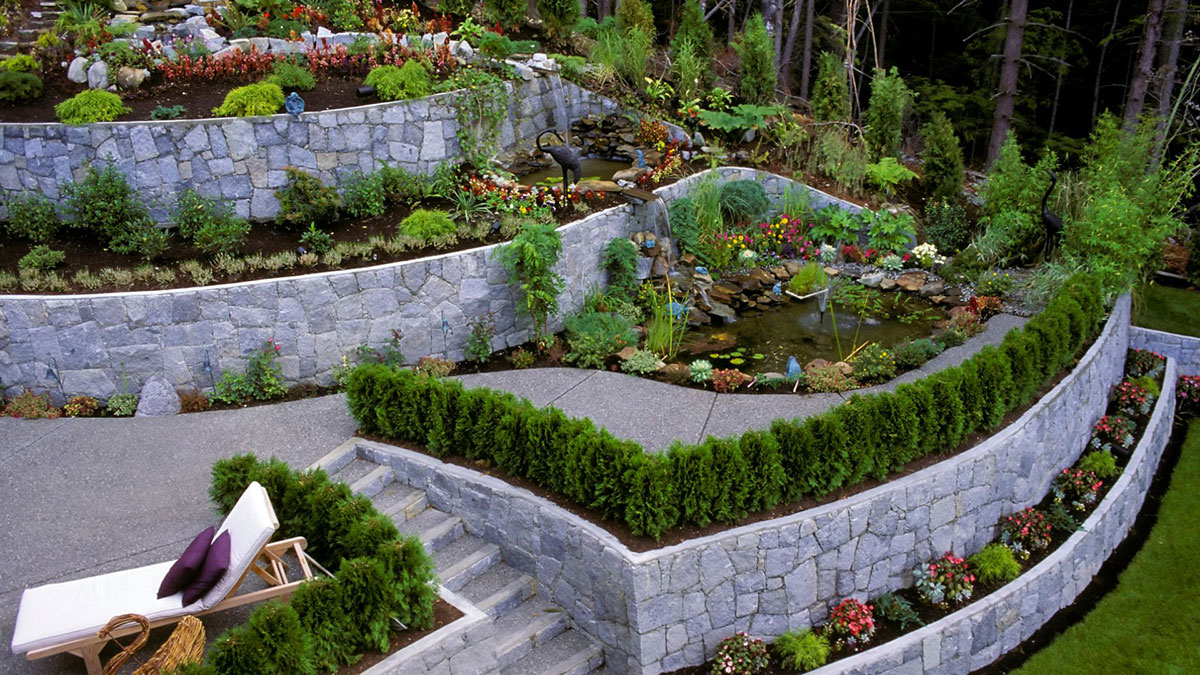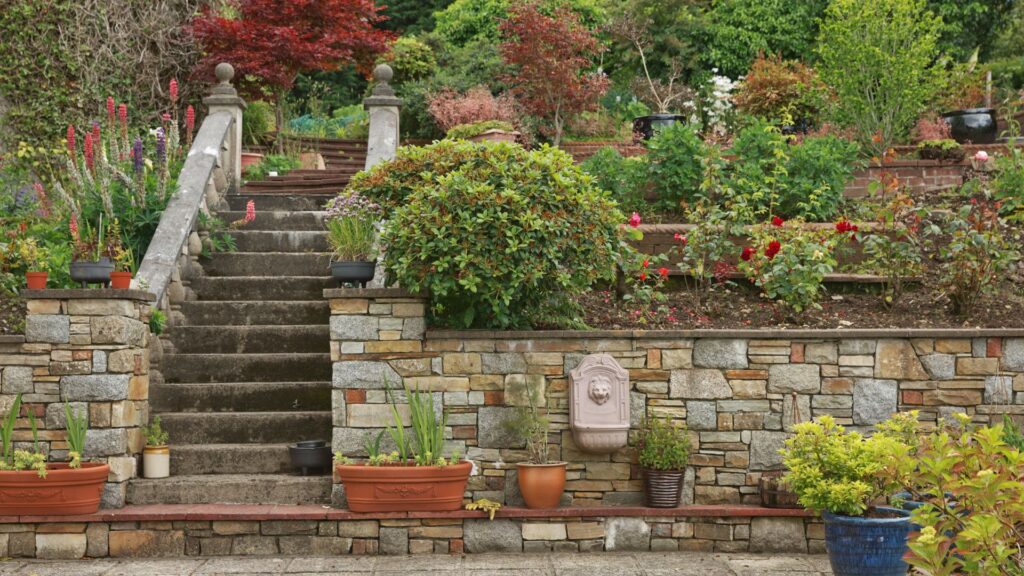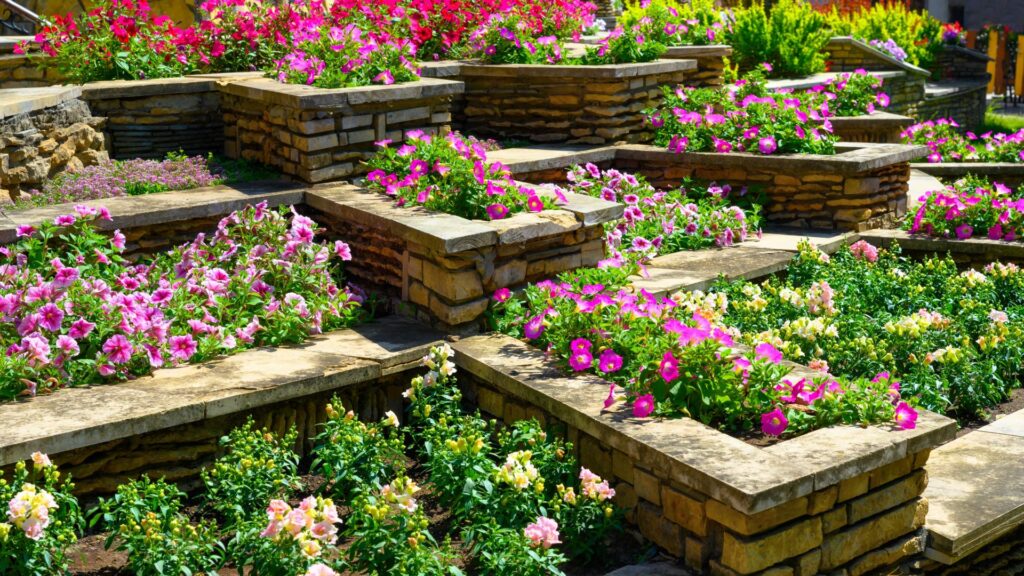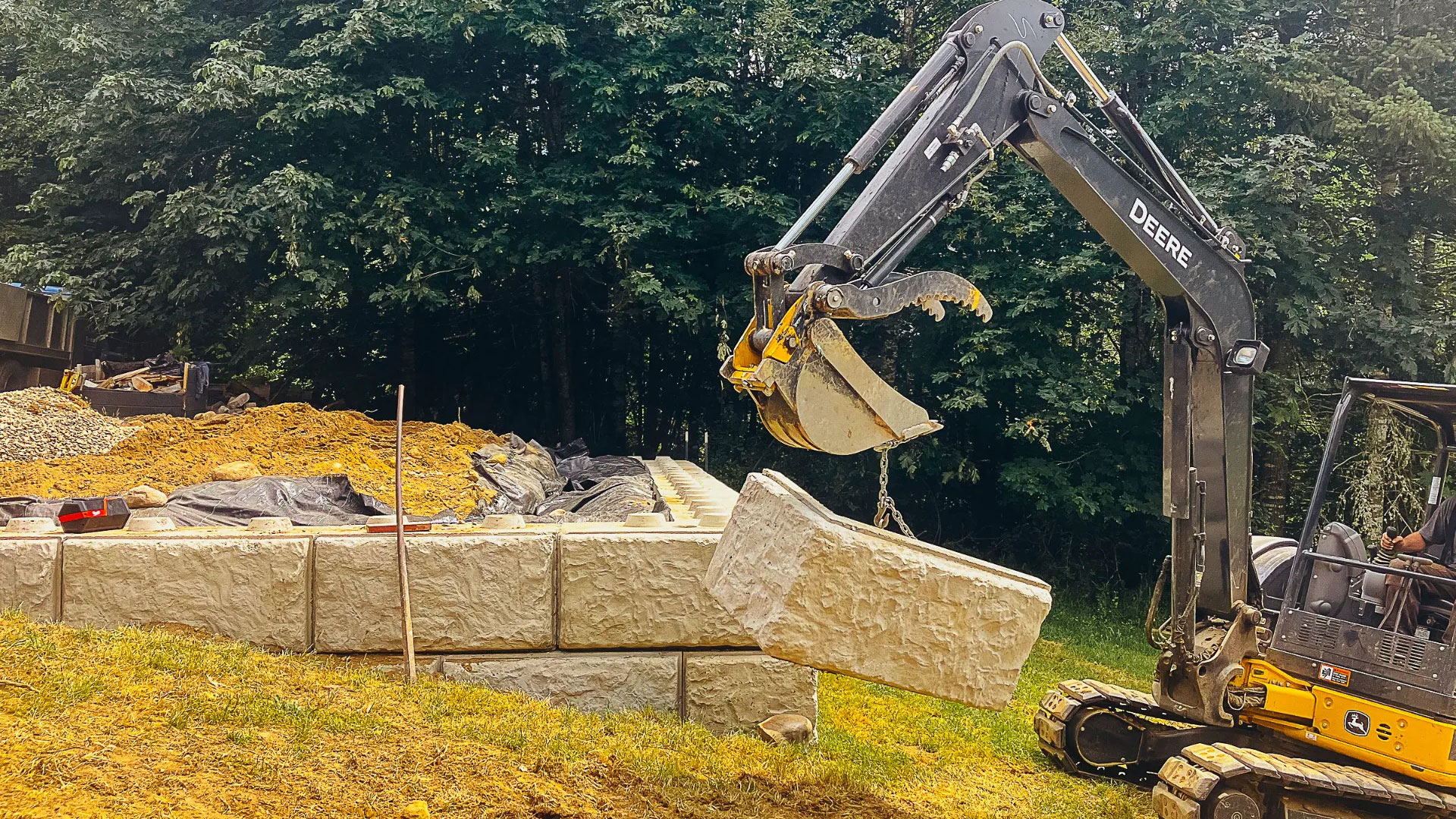
Do I Need a Retaining Wall?
Whether your home sits high on a hill or is built into the side of one, you’ve probably encountered a few challenges maintaining your landscape. Maybe the water washes downhill before your plants have a chance to soak it up. Or you like where your house is but wish you had more usable outdoor space.
No matter your outdoor dilemma, retaining walls may be the solution. They can protect your home and landscape, improve your water management, and help you design a beautiful and functional outdoor space.
What Is a Retaining Wall and What Does It Do?
As the name implies, a retaining wall retains things. In your landscape design, a retaining wall stops soil from sliding down a slope or hill. While retaining walls are a beautiful accent in your yard, retaining walls serve a useful purpose that protects and improves your landscape.
Prevents Soil Erosion
A retaining wall’s main purpose is to prevent soil erosion after heavy rainfall, though erosion can happen after a light rain on a particularly steep slope.
Erosion is detrimental in two ways. First, the soil washes away from your property and into the sewer. Second, and perhaps more importantly, soil erosion can increase the likelihood that rain damages your home’s foundation.
The soil around your home protects its foundation by soaking up the rain and directing it away from your home. This stops rainwater from pooling near the foundation and sitting against the foundation. As the soil near the foundation erodes, the water won’t drain away from the house, and, over time, this moisture can damage your home’s foundation, causing serious problems you may not catch until it’s too late.
Manage Water Runoff
In addition to preventing erosion, retaining walls help you use and manage rainwater more efficiently. Retaining walls slow water runoff and act as a drainage system, allowing you to capture and incorporate rainfall as part of your landscape design and overall water management plan.
Improves Your Existing Space
Property that’s on slopes or hills can be more challenging to maintain. Unless you’ve got a riding mower or have someone else doing the work, maintaining a flat yard is easier than maintaining a hilly or sloped landscape.
To create a flat area, you have to cut into or push back part of the existing slope. While that’s easy to do with the right machinery, keeping it there requires an expertly installed retaining wall.
Once you’ve leveled your landscape with a retaining wall, you’ll also find you have more usable, livable space. You can plant a garden, install a pool, or add a deck. What’s more, retaining walls help protect the foundation of whatever you add, ensuring you can enjoy it for years.
Signs You Need a Retaining Wall
While a hilly landscape and soil erosion are signs you need a retaining wall, there are other indicators to look out for.
Your Home Has Water Damage
Soil erosion can be a slow process you don’t notice until it’s too late. But if you’ve noticed standing water near or against your house after a heavy rain, your basement is perpetually damp, or you see cracks in your foundation, you may need a retaining wall to direct the water away from your house.
You Want More Space
Hilly and sloped landscapes have their advantages, but they don’t always have the outdoor space you want or need. A retaining wall helps you reshape your property and create the front and backyard design of your dreams.
You Want to Use Rainwater Efficiently
The Pacific Northwest is rainy, and that abundance of rain is great for gardens. But if it’s running off your property and into the sewer, you’re not taking advantage of it.
A retaining wall can help you capture and use that rainwater more efficiently. Even if you’re not an avid gardener, keeping the rain out of the sewer is good for the environment and can help you maintain your landscaping when there’s a dry spell.
Retaining Wall Materials
Retaining walls can be built from all types of materials that suit your goals and budget. You can build a retaining wall out of:
- Timber walls
- Poured concrete
- Interlocking blocks
- Natural stone
- Gabion walls
Some retaining wall materials are more durable than others, but each of these can transform the look of your backyard.
We Can Help With Your Retaining Wall Installation Project
While you can tackle and install a retaining wall project yourself, this is a job often better left to the pros. Understanding your property’s specific needs, the type of issues you’re facing, and the different kinds of retaining wall techniques (like how to install wood or natural stone retaining walls) are just a few of the things you need to understand to ensure you have a properly built retaining wall.
Our team will review your retaining wall design options, determine the best material and placement of a new retaining wall, and help you create an outdoor space you want to spend time in. Schedule your free consultation today and learn how we can help.
Most Recent Post



